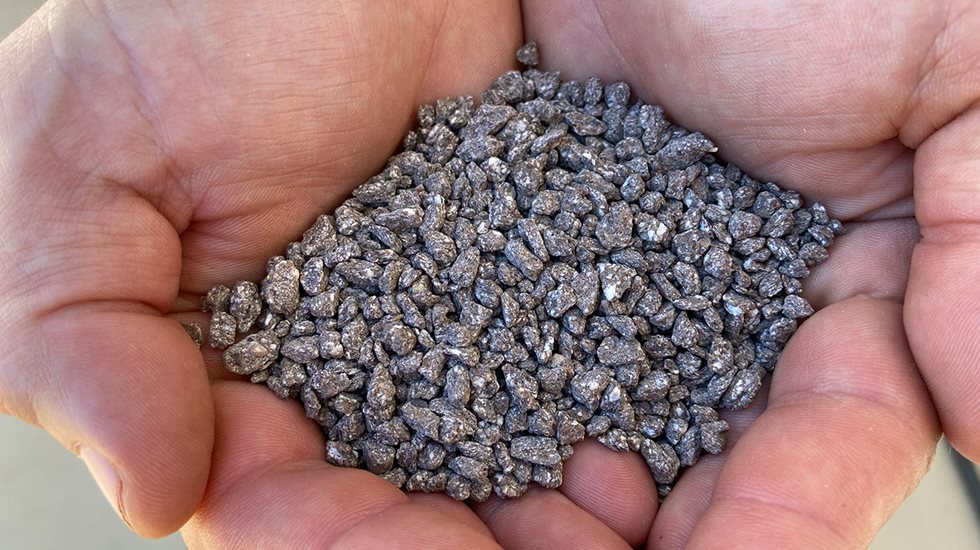Compaction basics
Compaction involves 2 stages: First, the fine, dry particles are put under extreme pressure that will compress the materials into sheets or flakes. This is usually done by two rollers, which can be either smooth or grooved. Second, those sheets or flakes are broken into smaller particles and then proceed to a classification stage. Depending on the type of product, the fines can then be fed by gravity or pressurized thread.
Specifications of compaction plants depends on several factors: Granulometry of the material fed, which normally the particles are less than 1 mm and greater than 0.1 mm. Temperature affects and helps to increase the density of the flake or sheet. Pressure of the rollers must be considered because each product has an ideal pressure. The higher the pressure, the greater the density of the flake or sheet will be. Lastly, always consider the moisture and thickness of the material. Normally there will not require any liquid or binder medium, but in some cases may require the presence of low humidity and binders.
Why compaction?
Fertilizer compaction comes with unique benefits due to the process and has become regularly adopted for difficult-to-granulate materials. Compaction reduces energy costs because no dryers or binders are required. This method also can normally depend just on mechanical pressure alone.
The plant will gain space due to the operational simplicity and flexibility. Changing the formulation is a quick and simple procedure making compaction a low-cost process. This also will take advantage of raw materials that were segregated during transportation or storage making recovery of fines very feasible. Flexibility of compaction plants can also be demonstrated by their product in applications where the material is difficult to granulate.
The compaction plants will have lower maintenance costs and greater ease of a safe operation. The factory set up and batch sizes can be smaller compared to a wet granulation process. Being a dry process, dedusting and filtration are there to control pollution, which is dispensing with the use of a gas washer and liquid effluent treatment.

